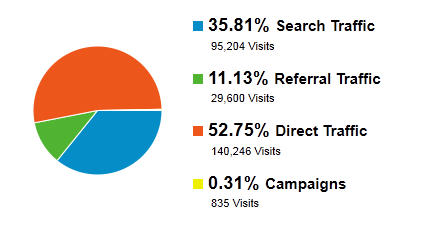You’ve just spent the past year implementing a new ecommerce platform. You flip the switch and revenue is down twenty percent. You realize you are facing your worst nightmare. How do you wake up?
A Forrester report from early 2011 states that 49 percent of online retailers are planning to replatform their ecommerce solution within the next two years. If a typical technology cycle lasts three years, and it takes two years to choose, implement, and fine-tune a suitable alternative to your current platform, it’s safe to say that companies are perpetually in a replatforming mode.
If you have decided to do an ecommerce replatforming project, prepare not only for customizing the ecommerce platform to your needs, but also to measure the results of the new platform against the old one.
Too frequently when performing an ecommerce replatforming, there’s a six to nine month project spent identifying the right vendor with which to work, followed by a six to nine month project to implement the platform. Why leave all of that work to chance when the new platform is launched because revenue changed in an unknown way, both up or down? In order to prepare yourself for flipping the switch, make sure to monitor these seven data points for 30 days before and 30 days after the launch of a new e-commerce platform.
1. Traffic
– It may seem obvious, but the moment that you flip the switch, usually at an off-hour, your traffic goes from platform A to platform B. Of course, at that moment, the traffic is likely not changing in any significant way, but when you have to report on revenue for the first 30 days against the previous 30 days, there are many factors that can influence the traffic reaching your site, some under your control, some not. You need to compare apples to apples as much as possible, so keep changes that affect traffic generation at a minimum.
2. Traffic profile
– Measure your traffic sources to see if there are any significant changes. You should have an understanding of the revenue per visitor from different channels. What if your overall revenue drops by 20% or you see a channel that had a 50% higher revenue per visitor suddenly had 80% less traffic? How would you explain a significant revenue decrease?
I once read a case study of a company that experienced a severe decrease in revenue following a platform migration. They analyzed their traffic profile and, as it turns out, their PPC campaigns had been shut down prior to the migration to the new platform. Anyone that knows about PPC knows that it’s a high converting part of the traffic profile, so by keeping track of these changes before and after replatforming, you have a better chance at nipping these problems in the bud.


3. Exits
– Another common mistake that goes unnoticed is changing the flow of your checkout process so that it increases or decreases by a number of steps. This change may contribute to either an increase or a decrease in the conversion rate for the entire platform or potentially for a specific channel. If you previously required a customer to visit three pages to go from home page to cart but now require only two pages, be certain to closely investigate at what point visitors are exiting your site.
4. Conversion rate
– Your macro conversion rate, as we discussed in a previous article, may be misleading. Instead, you want to focus on conversion rates for specific products and specific countries. For example, if you typically have a product or a region that brings in 70% of your revenue, another that brings in 25% and a third product that brings in 5%, you want to focus, not on overall conversion rates, but on each stream
5. Revenue per visitor
– The wise ecommerce manager knows that in addition to overall traffic and conversion rates, they must look at the revenue per visitor. It’s not enough to increase traffic if that increase isn’t accompanied by a growth in revenue. If your traffic doubles, so should your revenue. If it doesn’t, you need to look into what factors are causing a decrease in conversions despite an increase in traffic. Something is attracting the wrong kind of visitor, the window shopper. But what you want are quality visitors – people who are interested in your service or product and didn’t just land there through a wrongly worded or poorly placed PPC advertisement.
6. PPC
– In addition to measuring how much money you are spending on PPC before and after the migration, you also need to think about where you are sending that traffic. In fact, for the period prior to and after migration, PPC spending should remain steady so you can identify clearly if traffic profiles have truly changed. Again, the goal is to monitor the strength of the new platform, so keep changes like PPC spending and traffic at a minimum.
7. Email campaigns
– Unlike PPC campaigns, where you want things to remain relatively steady before and after a replatforming project, you may want to stop sending out email campaigns for the few weeks prior to migration. Unless you include redirects for an already active cart, stragglers who open up an old email after the migration may find themselves looking at an empty cart. Remember that email is one of the strongest marketing channels around. Don’t make the mistake of misguiding customers because of your replatforming project.
Keystone
You must measure, report and explain changes in these seven areas during your ecommerce replatforming, or else all the meticulous work that went into researching and implementing the new platform will be wasted.
